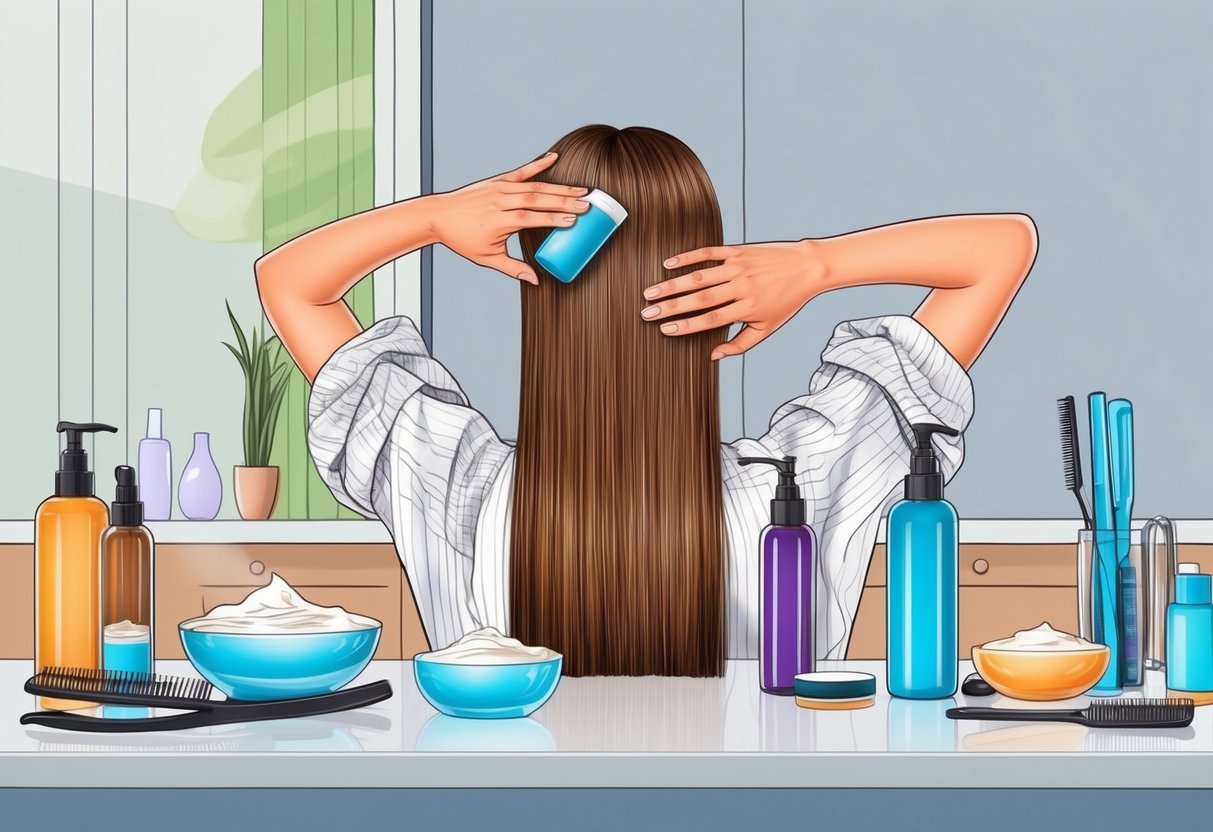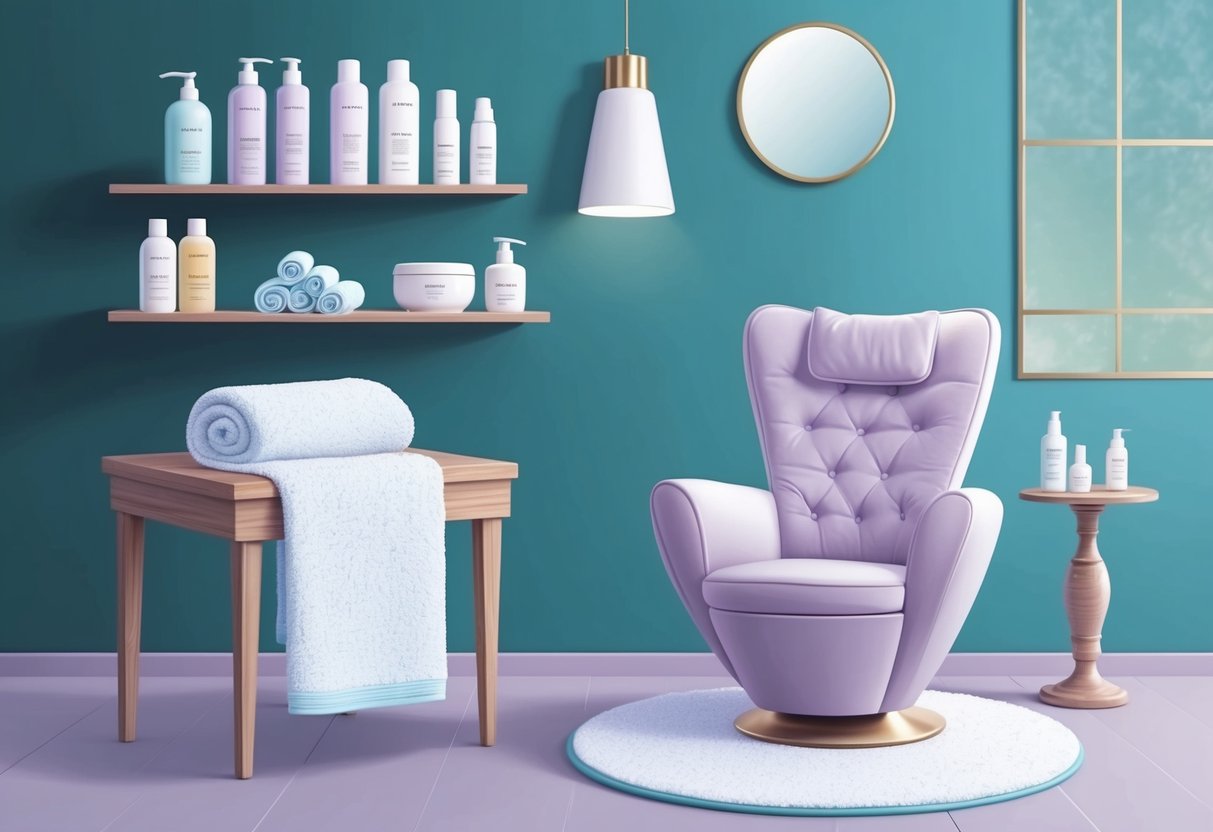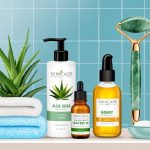Best Hair Care Routine for Damaged Hair: Expert Tips for Stronger, Healthier Hair
Product Selection for Hair Health
Selecting the right hair care products can make a significant difference in restoring strength and vitality to damaged hair.
Key considerations include nourishing ingredients, effective clarifying solutions, and gentle styling products designed to balance moisture and minimize further stress.
Nourishing Products for Damaged Hair
Individuals with damaged hair should look for treatments that focus on hydration, protein repair, and bond-building.
Products containing ingredients like keratin, argan oil, and hydrolyzed proteins help restore elasticity and softness.
Protein-rich masks and leave-in conditioners can improve resilience, while deeply moisturizing treatments like shea butter and coconut oil support daily hydration and cuticle repair.
A widely recommended option is a bond builder treatment, such as Olaplex No. 3, recognized for its ability to rebuild broken hair bonds and improve overall texture.
Consistent use of nourishing serums and protective oils can help prevent breakage and split ends.
Those seeking more guidance on restorative options may find expert reviews on damaged hair treatments helpful.
Clarifying Shampoos and Detox
Product buildup and dullness are common concerns for those regularly using styling products or living in hard water areas.
Clarifying shampoos and detox formulas are designed to remove excess oils, residues, and minerals that can weigh hair down and impact shine.
It is important to select clarifying shampoos that are sulfate-free and formulated for damaged or color-treated hair to avoid unnecessary dryness.
Experts recommend limiting clarifying treatments to once a week or less, as overuse can strip the scalp’s natural oils.
For best results, alternate clarifying products with a gentle, hydrating shampoo and always follow with a nourishing conditioner or mask.
Regular detoxing can promote scalp health and enhance the effectiveness of follow-up treatments.
Balancing Styling Products
Effective styling with damaged hair should rely on products that protect against heat and environmental stress.
Peptides, silicones, and lightweight oils in styling sprays and creams help create a protective barrier and add shine without contributing to excess buildup.
Thermal protectants are crucial for anyone using blow dryers, straighteners, or curling irons.
Avoid formulas that contain high levels of alcohol, which can exacerbate dryness.
Lightweight mousses and frizz-control serums can define shape and control flyaways, ideal for maintaining smoothness and flexibility between washes.
Refer to recommendations for the best hair products for healthy hair when considering new styling solutions.
Repairing Hair After Chemical or Color Damage

Chemical treatments and coloring, especially bleaching and balayage, can weaken the hair shaft, resulting in dryness, split ends, and increased breakage.
Effective hair repair strategies target moisture retention, color preservation, and strengthening to ensure lasting improvements for chemically treated hair.
Caring for Colored and Bleached Hair
When hair has been colored or bleached, its protective cuticle layer is often compromised.
Gentle cleansing is essential; shampoos formulated for damaged or color-treated hair typically have lower sulfates and added conditioning agents.
It’s beneficial to incorporate a deep conditioning mask or nourishing treatment at least once a week.
Products containing fatty acids, proteins, conditioning oils, and humectants can help replenish lost moisture and repair structural integrity.
Learn more about specific ingredients recommended by experts in this Vogue article on damaged hair treatments.
Always handle wet hair gently and use a microfiber towel or a cotton T-shirt to avoid friction and further breakage.
Minimize the use of hot tools or apply a heat protectant before styling.
Minimizing Color Fading
Color fading is accelerated by frequent washing and exposure to harsh ingredients. Opt for a shampoo and conditioner system specially designed for color-treated or damaged hair to lock in pigment and boost radiance.
Washing with cooler water also helps seal the cuticle and reduce dye loss. Cover hair when swimming, and limit sun exposure, as UV rays can cause significant fading.
When possible, extend the time between wash days and use dry shampoo to maintain hair freshness. The L’Oréal Paris guide to fixing damaged hair offers more tips on caring for chemically treated and colored hair.
Restoring Hair Strength Post-Treatment
Damaged hair benefits from regular protein treatments, which fill gaps in the hair shaft created by chemical services. Ingredients like keratin, silk proteins, and wheat proteins help rebuild strength and resilience.
When choosing products, prioritize those labeled for repair, reconstruction, or strengthening. Incorporate daily leave-in conditioners or serums with lightweight oils to smooth cuticles and control frizz.
Limit mechanical stress by detangling with a wide-tooth comb, starting at the ends and working upward. Find dermatologist-approved strategies for hair repair and preventing further damage at the American Academy of Dermatology’s healthy hair tips page.
Supporting Scalp Health and Hair Growth

Scalp health is the foundation for strong, vibrant hair and can affect everything from breakage to thinning. Prioritizing scalp care, using gentle exfoliation, and supporting growth with targeted nutrients are vital for anyone seeking to restore and maintain healthy, resilient hair.
Importance of a Healthy Scalp
Maintaining a healthy scalp helps create the ideal environment for new hair growth and reduces issues like dandruff and flaking. When the scalp is balanced—free of excess oil, dead skin, and buildup—hair follicles remain unclogged and better able to produce strong hair strands.
Excess product, sweat, and sebum can otherwise compromise scalp health over time. Regular gentle cleansing is key.
Choose a shampoo that suits the scalp’s unique needs, such as a nourishing formula for dryness or a clarifying option to reduce oil and buildup. According to the American Academy of Dermatology, rough drying or scratching your scalp can cause additional irritation, so it’s important to be gentle with your hair and scalp care routine.
Toweling hair carefully and avoiding tight hairstyles also reduce scalp stress and prevent hair breakage; see these expert tips for healthy hair.



